From the very beginning, Iran’s growing military power has been a big concern for the United States of America and now when Israeli-Palestine war is going on, both Israel and the USA are worried about Iran’s military next move. In this article, we are going to discuss about Iran’s military Power in detail. We will learn about the history of Iran that make its army stronger, its present situation in the world and much. So keep reading this article till the end.
- Today, in 2023, Iran Ranked 17 out of 145 countries in having powerful military (GFP site)
- Iran has the Largest military in the Middle East
- Iran Owns tanks 1634, special force guns, rockets, missiles(Iran’s missile arsenal is the largest and most diverse in the Middle East.) Iran possesses “over 3,000” ballistic missiles and these numbers doesn’t include land-attack cruise missile force.
- Iranian long range missile Shahab-5 Potential range of the missile is estimated to be between 4,000 and 4,300 km with a warhead payload of 700 to 1,000 kg., fighter jet and radar system,2345 armored combat vehicle,1900 rocket launchers,35 submarines,100 patrol vessels,510 aircraft)
But Iran and its military were not like this before. They have turned into strongest country from being just a doormat in hands of western power.
for this we have to go back in the history of Iran which made them strongest power in Middle East and a stronger threat to countries like USA. Without knowing their history we cant understand their present.
#1. Historical Significance
Iran’s history is very, very old, going back thousands of years. A long time ago, the people in Iran, called Persians, did many important things like art and science, and their empire was one of the biggest in the world. Their culture and art still have a big impact on the world.
The history and culture of Persia make Iran special and give it a strong sense of who they are. This history is like the secret weapon that makes them feel strong and important.
#2. The 1953 Coup in Iran (Operation Ajax)
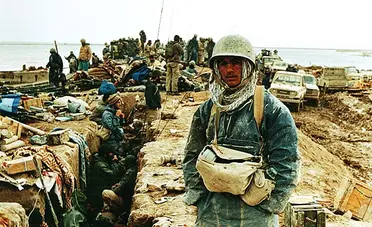
In 1953, Iran experienced a TRAGIC event that drastically altered the course of its history: the coup PLANNED by foreign powers, chiefly the United States and the United Kingdom, aimed at toppling Iran’s democratically elected Prime Minister, Dr. Mohammad Mossadegh. The coup, known as “Operation Ajax,” was a covert operation that had far-reaching consequences, shaping Iran’s political and foreign policy landscape for decades to come.
Root Causes of the Coup
1. Nationalization of the Oil Industry:
The primary catalyst for the coup was Iran’s nationalization of its oil industry. At the time, Iran was a major oil producer, and the British-owned Anglo-Iranian Oil Company (now BP) controlled a substantial share of Iran’s oil reserves. Mossadegh’s government took steps to nationalize the oil industry, which was met with strong opposition from Britain, who had significant stakes in the oil business. The United States, concerned about its Cold War interests in the region, also saw Mossadegh as a potential threat.
2. Cold War Context:
The early 1950s marked the height of the Cold War, with the United States and the Soviet Union vying for influence around the world. Iran was seen as a significant player in the region, and the U.S. was wary of the spread of communism. It feared that if Mossadegh wasn’t supportive of American interests, he might lean towards the Soviet Union.
3. Foreign Involvement in the Coup
The United States and the United Kingdom played a decisive role in orchestrating the coup. The operation was code-named “Operation Ajax” in the U.S. and “Operation Boot” in the UK. The two governments collaborated to oust Mossadegh and replace him with a pro-Western leader.
- Economic Pressure: The British government imposed economic sanctions on Iran, crippling its economy. The Iranian oil industry was blockaded, severely affecting the country’s finances.
- Propaganda and Disinformation: The U.S. and UK engaged in a propaganda campaign, depicting Mossadegh as a communist and a danger to Iran’s stability. They used the media and covert outlets to tarnish his image.
- Supporting Opposition: The CIA, along with MI6 (British intelligence), provided financial support and logistical assistance to opposition groups and figures within Iran. This covert support facilitated protests and strikes against Mossadegh’s government.
- Shaping Public Opinion: The coup involved various tactics to manipulate public opinion. Radio broadcasts and printed materials were used to create the perception that Mossadegh was a threat to Iran.
Outcome of the Coup
The coup was successful, and Mossadegh was removed from power. Mohammad Reza Pahlavi, known as the Shah, was reinstated as the leader of Iran. The Shah was seen as more pro-Western and cooperative with the oil companies.
The coup reshaped Iran’s political landscape in several significant ways:
1. Deep Mistrust of Foreign Powers: The 1953 coup created a profound and lasting sense of mistrust among Iranians toward foreign powers, particularly the United States and the United Kingdom. Iranians viewed the coup as a outside interference in their internal affairs, undermining their sovereignty. This deep-seated mistrust became a defining feature of Iran’s foreign policy and remains relevant today.
2. Strengthening of the Monarchy: The coup consolidated the Shah’s power. While initially considered a constitutional monarch, the Shah became more autocratic, leading to widespread discontent and eventual social upheaval.
3. Seeds of the 1979 Revolution: The 1953 coup and the Shah’s authoritarian rule sowed the seeds of the 1979 Iranian Revolution. The events of 1953 generated a powerful sense of opposition to Western meddling and a longing for self-determination, which eventually culminated in the overthrow of the Shah and the establishment of the Islamic Republic of Iran.
4. Focus on Self-Reliance: The coup highlighted the vulnerability of Iran to external interference. This lesson led to a strong emphasis on self-reliance, particularly in the military sector. Iran began to develop its defense capabilities, build a domestic arms industry, and reduce its dependence on foreign powers.
5. Impact on Iran’s Foreign Policy: The coup had far-reaching implications for Iran’s foreign policy. It contributed to Iran’s policy of “neither East nor West,” as the country sought to maintain its independence by not aligning too closely with either superpower during the Cold War. This approach shaped Iran’s stance on global issues and international alliances.
The 1953 coup in Iran, Operation Ajax, had profound and enduring consequences for the country. It not only marked a turning point in Iran’s history but also had a lasting impact on its domestic politics, foreign policy, and relations with the Western world. The coup led to deep-seated mistrust of foreign powers, a shift toward self-reliance, and the eventual birth of the Islamic Republic. Understanding this historical event is crucial to comprehending Iran’s political and military landscape in today’s era.
#3. The 1979 Revolution
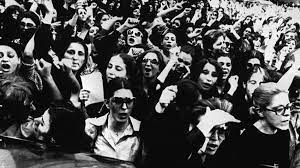
In 1979, Iran went through a big change. They got rid of the Shah and started their own government, which was based on their religion, Islam. This change had a big impact on Iran’s military.
The military was organized to follow the new government’s rules. It became more important in keeping the new government in charge. Iran’s military started focusing on protecting their country and their new government, which was different from before.
The 1979 Iranian Revolution was a very important event in Iran’s history. It was like a big change that happened in the country. This change led to the end of the king’s rule and the start of a new kind of government called the Islamic Republic.
What Caused the Revolution?
The revolution happened for a few reasons:
- A Strong Leader: The king of Iran, known as the Shah, was very powerful, and he didn’t allow people to speak freely or have their say in how the country was run.
- Problems with Money: Many people in Iran were very poor, and they didn’t have much money. But the Shah and his friends were very rich.
- Foreign Influence: The Shah had a lot of support from the United States, and many Iranians didn’t like that because they thought the U.S. was telling Iran what to do.
- Religion and Culture: Iran is a religious country, and the Shah was making changes that some people didn’t like. They felt he was getting rid of their traditional way of life.
How the Revolution Happened
The revolution didn’t just happen overnight. It took time and had several important parts:
- People Protesting: Many people in Iran started to protest against the Shah’s rule. They took to the streets and showed they were very unhappy.
- Religious Leader: A religious leader named Ayatollah Khomeini became very important during this time. He told people to keep protesting and not give up.
- The Shah Leaves: The Shah left Iran, and this made people even more determined to change things.
- New Islamic Republic: After some time, Iran became an Islamic Republic. This meant that religious leaders had a lot of power, and a new kind of government was created.
What Changed?
The Iranian Revolution changed many things in Iran:
- End of the King: The Shah’s rule came to an end, and he left the country.
- Islamic Republic: Iran became an Islamic Republic, which means that religious leaders have a big say in how the country is run.
- Anti-Western Feelings: Iran’s government started to be against Western countries, especially the United States and Israel. This led to problems with these countries.
- New Rights for Some, but Not All: The revolution improved some rights, but not for everyone. Women had more rights at first, but later, some of those rights were taken away.
- Influence in the Region: Iran became an important country in the Middle East and started to have a say in what happened in the region.
#4. The Iran-Iraq War (1980-1988)
The Iran-Iraq War was a very long and tough fight that happened between Iran and Iraq from 1980 to 1988. This war had a big impact on Iran and its ability to make its own military stuff.
Why the War Started
The war began because Iraq’s leader, Saddam Hussein, decided to invade Iran. He wanted to take over a piece of land and thought Iran was weak because of its recent revolution. So, the war began.
What Happened During the War
The Iran-Iraq War was very difficult and caused a lot of problems for both countries. It involved battles on land, in the air, and at sea. Many people lost their lives, and there was a lot of destruction.
How the War Helped Iran Make Military Stuff
Even though the war was tough, it actually helped Iran become better at making its own military equipment. Here’s how:
- Self-Reliance: During the war, Iran was cut off from getting weapons and equipment from other countries because of an international embargo. So, they had to rely on themselves. They started making their own tanks, planes, and even simple things like bullets.
- Learning from the War: The war was like a big school for Iran’s military. They learned how to fight, what kind of weapons they needed, and how to use them effectively. This experience made their military stronger.
- Tough Lessons: The war was really hard, but it taught Iran important lessons about defending themselves. They realized they had to be strong to protect their country.
The Legacy of the War
The Iran-Iraq War left a lasting legacy on Iran:
- Military Independence: Iran became more self-reliant in producing its own military hardware, which means they didn’t have to depend on other countries for weapons.
- Improved Military Skills: The war made Iran’s military better at what they do. They learned how to fight, plan strategies, and use their equipment effectively.
- Focus on Defense: The experience of the war reinforced Iran’s commitment to defense. They wanted to make sure they could protect their country and people from any threats.
In simple terms, the Iran-Iraq War was a tough and long battle that helped Iran become better at making its own military equipment. Because they couldn’t get weapons from other countries, they learned to rely on themselves. This made their military stronger and more independent, which is important for their defense.
Operations That Made Iran’s Military Stronger: “Prime Chance” and “Praying Mantis”
During the Iran-Iraq War, two important operations, “Prime Chance” and “Praying Mantis,” played a big role in making Iran’s military more powerful.
Operation Prime Chance:
- Protecting Oil Ships: In the middle of the Iran-Iraq War, the Persian Gulf, where lots of oil ships passed through, was a very important area. The United States Navy was there to keep those ships safe because the world needs that oil.
- Iran’s Response: Iran thought the U.S. Navy was helping their enemy, Iraq. So, they decided to act. They used small boats and underwater mines to attack U.S. and Kuwaiti ships. It showed they were ready to protect their interests.
- Result: Operation Prime Chance proved that Iran could stand up to the powerful U.S. Navy and disrupt their operations in the Persian Gulf. This sent a strong message that Iran was determined to protect its interests and stay in that important area.
Operation Praying Mantis:
- U.S. Fights Back: After Iran’s actions in Operation Prime Chance, the United States fought back with Operation Praying Mantis in 1988. Their goal was to hit Iran’s navy. They targeted Iranian ships and bases in the Persian Gulf.
- Iran’s Reaction: Iran didn’t back down when the U.S. attacked. They defended their interests and showed they wouldn’t give in.
- Impact: Operation Praying Mantis proved that Iran could respond to threats and protect its interests in the Persian Gulf. It showed that Iran was an important player in the region.
How It Made Iran’s Military Stronger:
- Better Navy: In response to these operations, Iran realized they needed a stronger navy. So, they improved their navy, including adding faster boats, underwater mines, and missiles that could sink ships.
- Defending, Not Attacking: Iran learned that they should focus on protecting themselves instead of starting fights with others. This became an important part of their military strategy.
- Making Their Own Weapons: These operations also pushed Iran to make more of their own weapons and military equipment. This way, they didn’t have to rely on other countries for their military needs.
- More Regional Influence: Iran’s ability to face threats and protect their interests in the Persian Gulf made them an important player in the region. They showed they could take care of their own interests.
In simple terms, “Prime Chance” and “Praying Mantis” were two important events during the Iran-Iraq War. They showed that Iran could defend itself and protect its interests in the Persian Gulf. These experiences led to a stronger navy, a focus on defense, and the ability to make their own military equipment, all of which made Iran’s military more powerful.
Gulf War
The Gulf War primarily involved Iraq’s invasion of Kuwait and the subsequent coalition-led effort, primarily by the United States and its allies, to liberate Kuwait from Iraqi occupation.
Iran’s decision to remain neutral during the Gulf War was influenced by the desire to rebuild the nation after the Iran-Iraq War and to avoid further conflict that could jeopardize their recovery efforts. It was a strategic choice to focus on domestic stability and reconstruction rather than getting involved in another international military confrontation.
In summary, Iran did not have a direct role in the Gulf War.
Instead, they adopted a neutral position, primarily focusing on managing the humanitarian impact of the conflict, dealing with economic disruptions, and observing the changing political landscape in the Middle East. Their decision to remain neutral was influenced by their post-war recovery efforts and the desire to avoid further military engagement.
How Iran’s Geography Makes Its Military Stronger:
- Natural Protection: Iran has big mountains and deserts that act like a protective shield. It’s like having strong walls around a castle to keep enemies out.
- Good Defending Ground: The tough terrain, like mountains and deserts, makes it easier for Iran to defend itself. It’s like knowing all the secret hiding spots in a game.
- Controlling Borders: Iran shares borders with many countries, so they can influence what happens at their borders. It’s like being the boss of your own neighborhood.
- In the Middle of Things: Iran is right in the middle of important areas, so it can play a big role in what happens in the region. It’s like being the referee in a sports game.
- Trade Hub: Iran’s location is perfect for trade, like a busy crossroads where goods come and go. It’s like collecting tolls or making deals with travelers.
- Energy Power: Iran has lots of oil and natural gas, which are like treasures. They can control how much energy goes to other countries. It’s like having the keys to the world’s engine room.
- Helping Neighbors: Iran’s borders with countries like Iraq, Afghanistan, and Pakistan mean they can help keep these places peaceful. It’s like being the big brother who stops fights.
- Access to the Sea: Iran’s coastlines along the Caspian Sea and the Persian Gulf give them power over their waters and influence in these important places.
In simple terms, Iran’s location is like having a strong shield, making it hard for others to attack. It’s in the middle of everything, which lets Iran control trade and energy routes. This helps them protect themselves and be an important player in the region. Iran’s geography is like a secret weapon that makes its military stronger.
What Does a Defensive Stance Mean for Iran’s Military?
Imagine a defensive stance like a shield rather than a sword. It means that Iran’s military is more about protecting its own land and interests rather than going out to attack others. Here’s how this relates to Iran’s military power:
- Protecting Home: Iran’s military focuses on making sure its own country is safe. It’s like having strong locks on your doors and windows to keep your home secure. This defensive mindset means they are ready to defend their land if anyone tries to attack.
- Not Starting Fights: Iran doesn’t want to start conflicts with other countries. They prefer to avoid trouble and only fight back if someone else attacks them. It’s like being the peacemaker in your neighborhood.
- Strategic Advantage: This defensive approach is like playing a smart game of chess. Iran carefully plans how to protect itself, and this makes it harder for others to beat them. It’s like setting up a fortress that’s tough to conquer.
- Staying Strong: Instead of going on the offense, Iran’s military works on building its own strength. It’s like hitting the gym to get stronger. This way, they’re ready to defend themselves if needed.
In simple terms, a defensive stance means Iran’s military is all about protecting itself and not picking fights with others. They’re like the guardians of their own home, ready to defend if someone threatens them. This approach makes them strong and strategic in their defense, like a well-fortified castle.
Why USA and Israel don’t want Iran to increase their military power.
Let us understand the Iran Military structure in detail.
- Active army officers- 610,000 and in reserve they have 350000 highly trained officers
- Iran army is divided into four sectors- ground forces, air defense, airforce and navy.
- The most important and formidable part of Iran military is IRGC ( islamic revolution guard core) and in numbers they are appx 1,50,000 serves as the important part of Iran military.
Whereas the Iranian Army protects the country’s sovereignty in a traditional capacity, the IRGC’s constitutional mandate is to ensure the integrity of the Islamic Republic.Most interpretations of this mandate assert that it entrusts the IRGC with preventing foreign interference in Iran. The IRGC is officially recognized as a component of the Iranian military under Article 150 of the Iranian constitution. (wikipedia))
IRGC is divided into Five groups
- Ground forces-based across Iran’s 31 provinces and Tehran, which number more than 150,000 troops;
- naval forces, separate from the naval branch of Iran’s regular military, which have some twenty thousand sailors and are charged with patrolling Iran’s maritime borders, including the Strait of Hormuz, through which some one-third of the world’s seaborne crude oil passes each year;
- Air force– of fifteen thousand personnel, also separate from a parallel branch of the regular military, which runs Iran’s ballistic missile program
- Cyber Command, which works with IRGC-affiliated businesses on military and commercial espionage, as well as propaganda distribution
- The Basij paramilitary force, which claims it can mobilize some six hundred thousand volunteers;
And out of these 5 which garners more worldwide attention is The Basic Paramilitary force. Lets know more about this.
The Basij is a volunteer-based force, with 90,000 regular soldiers and 300,000 reservists.
Basij- A paramilitary volunteer militia established in Iran in 1979.
Today, the force consists of young Iranians, usually drawn from the traditionally religious and politically loyalist parts of Iran’s society, who volunteer, often in exchange for official benefits.
*****Now let us understand Why Iran is on USA and Israel Radar. Why these two countries are facing threat from Iran amid Israel and Palestine war?
- “One major concern is Iran’s nuclear program. They’ve been developing technology that could be used for nuclear weapons.”
- On September 2022, Iran held a major military parade to mark the anniversary 0f its 1980s war with Iraq
- They displayed the longest range drone in the world as well as a variety of missiles.
This parade featured large signs declaring down with Israel and down with USA
In fact, in August, Iran claimed that it had built an advanced drone named mohajer-10 featuring enhanced flight range, duration and larger payload.
It reportedly has an operational range of 2000 km and can fly for upto 24 hours, state media reported. The United States has issued new sanctions on drone and military aircraft linked to Iran accusing Iran of providing Mohajer-6 drones, among other UAVs, to Russia for its war against Ukraine.
Iranian President has denied providing drones to Russia for use in its ongoing war against Ukraine, claiming they sold drones only before the war began.
On September 22, Israeli PM Benjamin Netanyahu warned Iran at the United Nations that it faces a “nuclear threat”. But later he changed this statement. His officials said that it was by mistake, he was reading through the paper and instead of a military threat, he said nuclear threat.
So, we see how Iran comes out as one of the most powerful countries with the strongest military presence.
Hope you liked this article and have gotten an insight into Iran military power. Share your comments and feedback in the comment section below.




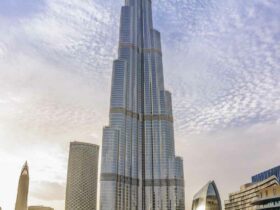


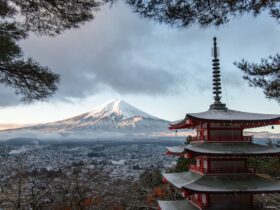




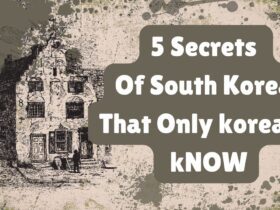









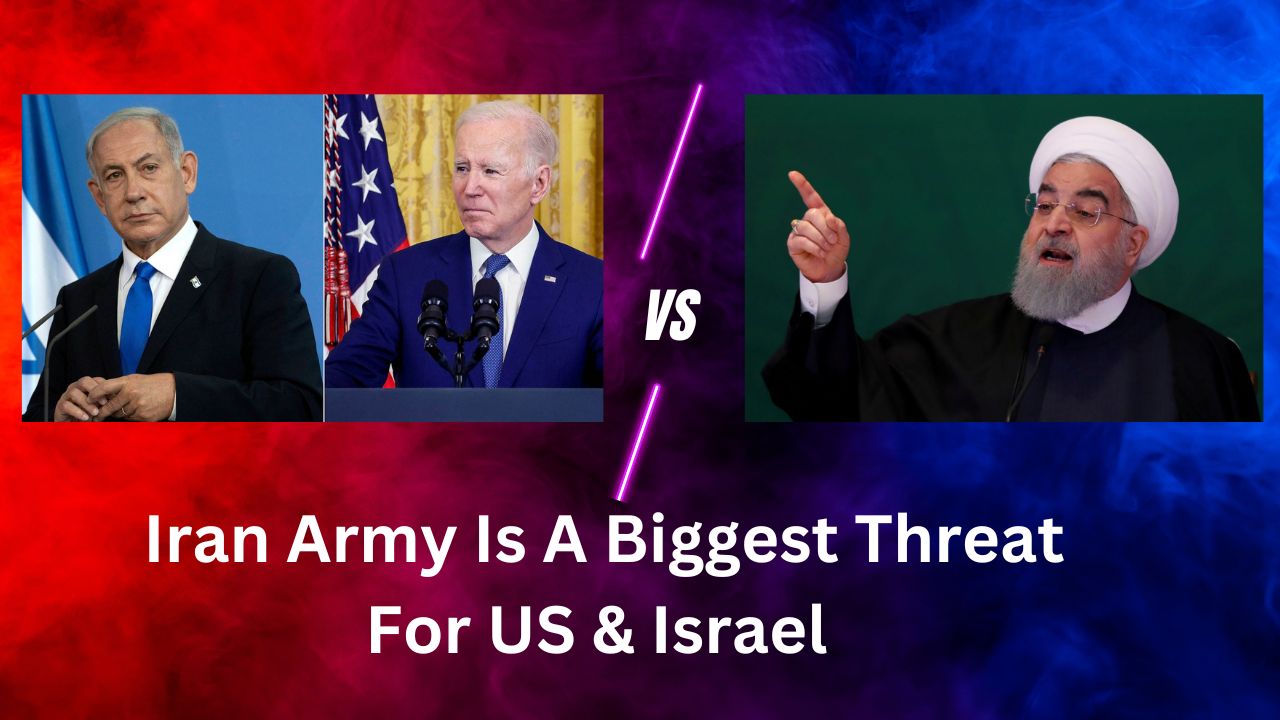

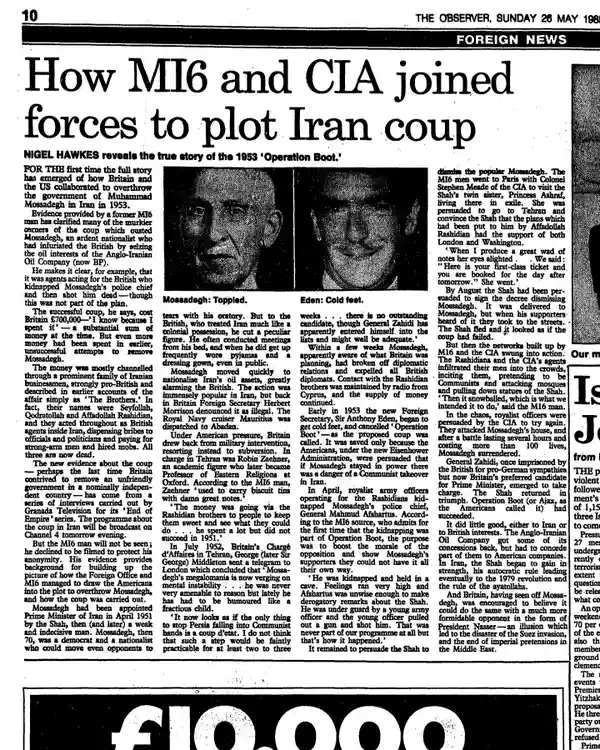
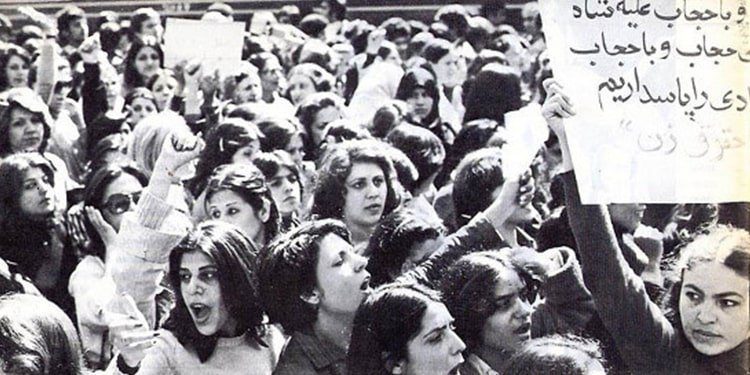
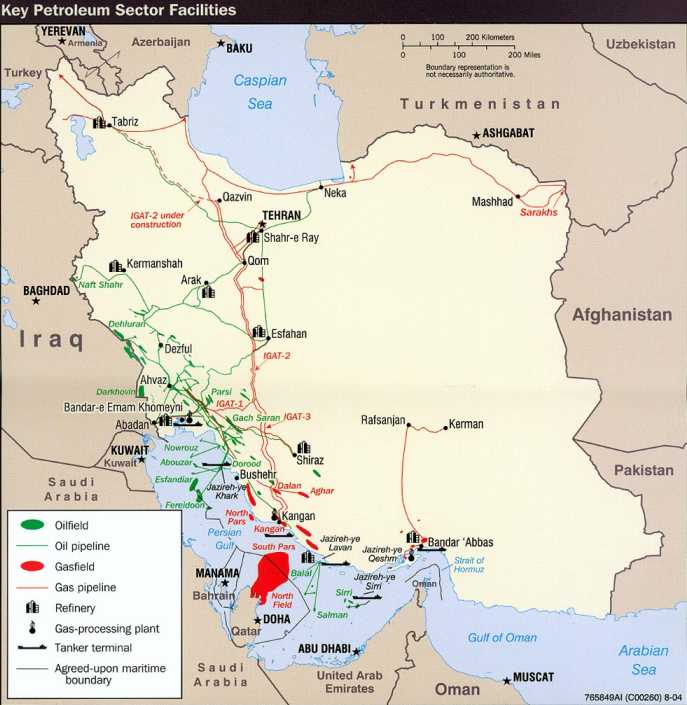
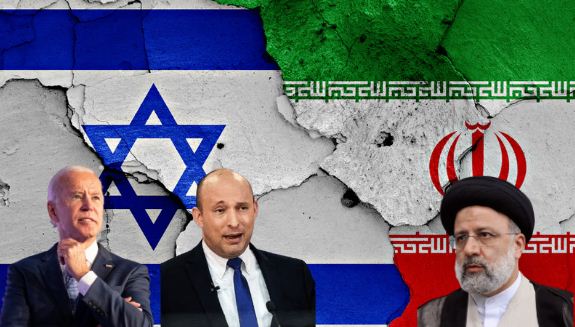
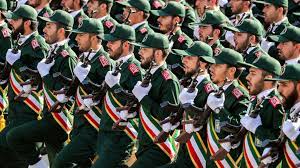



Leave a Reply
View Comments